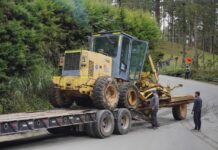Content
Of course that macro only plots the head lines, as it is the head that follows the Laplace’s equation. The flow lines must be drawn by hand, trying to draw “square” meshes. It is also useful in visualising the flow in a soil to plot the flow lines , these are lines that are tangential to the flow at a given point and are illustrated in Figure 2. That the flow lines and equipotentials are orthogonal. Mathematically, the process of constructing a flow net consists of contouring the two harmonic or analytic functions of potential and stream function. These functions both satisfy the Laplace equation and the contour lines represent lines of constant head and lines tangent to flowpaths .
Select the connector that you want to change the path of to see its waypoints. When you move the shape to a new position, the connector ends will automatically move around the shape to ensure the shortest distance. Hover over the source shape until you see the light direction arrows appear.
Flow Net Soil Water
Fixed connectors – These stay attached to a fixed point on your shape, even when you move the shape around the drawing canvas. Drag any of the round ‘grab’ handles to make the shape smaller or larger. Hold down Control when you resize shapes to keep them centred. Move – Select and drag a shape that is on the drawing canvas to another position. To select multiple shapes, hold down Shift or Cmd and click on them. There are many different shapes used to visualise processes in a flow chart.
As U.S. pushes a shift toward electric cars, where should the chargers go? – The Washington Post
As U.S. pushes a shift toward electric cars, where should the chargers go?.
Posted: Wed, 29 Dec 2021 14:00:00 GMT [source]
Find the hydraulic conductivity of the sands used in Darcy’s first series experiments (Figure 3.6), assuming that the height of the sand drawing flow nets column is 3 m and the diameter of the stand pipe is 0.35 m. Add colours and style your shapes and connectors via the Style tab.
Note In flow net problems we assume that the permeability of the soil is uniform throughout the soil’s thickness. I have been trying to use ArcHydro but have run into problems with that as well. When using ArcHydro I have discovered that instead of having a uniform direction, it shows that the groundwater will flow 360 degrees around a single well and this is for each well. This cant be possible so I am an stuck on how to approach this. Note that the equation is for laminar flow through porous media.
What Is “flownet”
Factors that contribute to dispersion include faster flow at the center of the pores than at the edges, some pathways being longer than others, flow velocity larger in smaller pores than in larger ones. The spreading due to both mechanical dispersion and molecular diffusion is known as hydrodynamic dispersion. It is observed that a precise estimation of the flow velocity is needed for an accurate estimation of the transport. In sand/gravel aquifers with significant groundwater, the plume movement is dominated by advection. However, it must be recalled that Equation 3.47 is not valid in karstic aquifers for which Darcy’s law is not applicable.
- However, adopting the Lucas-Kanade method only works for small movements and fails when there is large motion.
- Big blocks mean there is a low gradient, and therefore low discharge .
- The flow lines and the equipotential lines must intersect each other at right angles.
- I have been trying to use ArcHydro but have run into problems with that as well.
- It contains a good listing of journals, web sites, and organizations with interests in subsurface flows and contaminants issues.
Where Z is the thickness of the soil layer and E is the modulus of elasticity of the soil. Typical ranges of values of E are given in Table 3.4. The reciprocal of the modulus of elasticity is the compressibility, generally designated by the symbol α and given in inverse Pascal or square meter per Newton. In general, the modulus of elasticity increases nonlinearly with the intergranular pressure.
Using Gis To Construct Water Table Maps And Flow Nets
They are given instructions on how to rasterize the point data to create a contour map of the water table surface and are then shown how to create flow lines. Their task is to create a flow net that they will use to determine areas of groundwater recharge and discharge. They will then generate hypotheses to explain what controls the groundwater flow system in this area.
- For unconfined models, both saturated and unsaturated flow is simulated.
- For large Peclet numbers the fixed step solution and the line source solution are essentially identical as the second term in the right hand side of Equation 3.59 is negligible.
- In case there exists an impervious stratum in the foundation it obviously represents last stream line.
- These extensions point out appropriate width of the squares, such as squares marked and .
- Field evidence is again needed, and this may include outcrops of the aquifer in the stream bed, and a significant increase in flow as the stream flows across the aquifer.
The flownet can be constructed conveniently for most of the hydraulic structures graphically by trial and error method. The similarity between Equations 3.4 and 3.6 is now obvious. The flow rate is analogous to the current and the drop of head to the voltage drop. This analogy forms the basis for the resistance network models of aquifers .
Condition For Drawing Flow Net:
Draw their V-I characteristics and explain them? In short shunt connection the shunt field is connected directly across the armature terminals and the armature connection equals the sum of the shunt field current plus the load current . In this instance the load current flow s through the series field winding so that the load current and series field current are one and same. In long shunt connection the voltage across the shunt field is the same as the terminal voltage of the generator and current in the armature will be the current in the series field. The armature current equals the shunt field current plus the load current. A shunt generator has the field circuit connected directly across the armature.
How do you find the maximum exit gradient?
The total head loss H between the last two equipotential lines is 0.62 m. The distance between the two equipotential lines on the downstream end in the X area is 3.3 m. The exit gradient is then computed as 0.62 divided by 3.3 making the upward gradient 0.19.
In a matter of moments, the chart is going to be displayed in the main window along with the value of the shape factor and the critical point . With the help of the slider bars aforementioned, you can easily adjust the flow net lines and tune, so that you can be sure you receive the results that interest you. The quantity of water that enters the element must be equal to the quantity that leaves it. If the curves are drawn properly a circle can be drawn in each field which touches all the four sides of the field. If required more trials may be taken to draw the flownet finally. Read this article to learn about the theory of flownets through soils.
Proper Shape Of A Flow Net And Also Consume A Lots Of Time A Graphical
Turbulent diffusion, the most effective mixing mechanism, is absent in aquifers. As a result, the mixing zone between salt water and fresh water is small compared with the thickness of the aquifer and an abrupt well-defined interface is usually assumed.
What do you mean by anisotropy?
anisotropy, in physics, the quality of exhibiting properties with different values when measured along axes in different directions. Anisotropy is most easily observed in single crystals of solid elements or compounds, in which atoms, ions, or molecules are arranged in regular lattices.
Sparse optical flow selects a sparse feature set of pixels (e.g. interesting features such as edges and corners) to track its velocity vectors . The extracted features are passed in the optical flow function from frame to frame to ensure that the same points are being tracked.
The style palette at the top of the Style tab changes both the fill and outline colour. Click the left or right arrows to view more styles. Select a shape, or hold Shift down and click on multiple shapes and connectors to select many. Once you have finished adding all the shapes, connectors and labels, you can style your flow chart. Now when you drag the shape around on the drawing canvas, the connector will remain attached to exactly those connection points. Move your mouse cursor over the direction arrow you want to draw the connector from, then drag the connector out from the arrow towards the target shape.
- • A grid obtained by drawing a series of streamlines ψ and equipotential lines Φ is known as a flow net.
- Among the various methods of flow net construction, the most convenient method is the Graphical method.
- The equipotential lines are further extended downward, and one more flow line GHJ is drawn, representing the step .
- I forgot to menion in my last e-mail hat in the textbook/CD there is an interactive program that shows students how to draw flow nets and interpret the results apart from the interactive flow net program.
- The appearance of the entire flow net should be watched and not that of a part of it.
Computer models may consist of analytical approaches or numerical approaches. Analytical approaches are relatively more simplistic, offer an inexpensive method to conduct preliminary groundwater analysis, and may be useful during the early phases of a project. Numerical approaches are generally more complex and require specialized knowledge and software.
If the direction is not specified it is assumed to be in the direction of the maximum gradient. The hydraulic gradient is a dimensionless quantity (L/L) when consistent units are used (see also Chapter 2, Sections 2.4.7 and 2.4.11). This chapter is concerned with elementary 1D and 2D steady groundwater flow and transport problems. Advanced 3D flows, transient flows, transport processes, and modeling are treated in subsequent chapters. The geological setting is discussed in Chapter 2.
However, numerical approaches easily deal with variability in the groundwater flow and contaminant transport parameters, which provides flexibility in representing complex subsurface geologies. Numerical approaches are also useful for predictive evaluation of proposed remedial solutions and for the evaluation of environmental hazards. Thus computer modeling has become an important tool in the design of sampling strategies during site monitoring and in the design of groundwater remediation systems. Computer groundwater models are based on the geologic and hydrologic field data collected during drilling, geotechnical sample analysis and aquifer testing. Further, the computer models must be continually adjusted and calibrated based on additional information obtained throughout the project cycle.
Where the strata are inclined the samples likewise can be obtained from bore holes as well as from the outcrop. Bore holes samples are preferred because the outcrop material may be weathered and consequently unrepresentative of the aquifer. Consolidated aquifer samples typically are cylinders or cubes with diameter and length of 25–50 mm. Cubes have the advantage that they permit the determination of the permeability in three directions.
This exercise is done in a computer lab using ESRI ArcMap software with both the Spatial Analyst and 3D Analyst extensions. Students are given a copy of the Lakeside Nebraska 15 minute topographic map and a shapefile containing all the lake elevation data.
![]()









